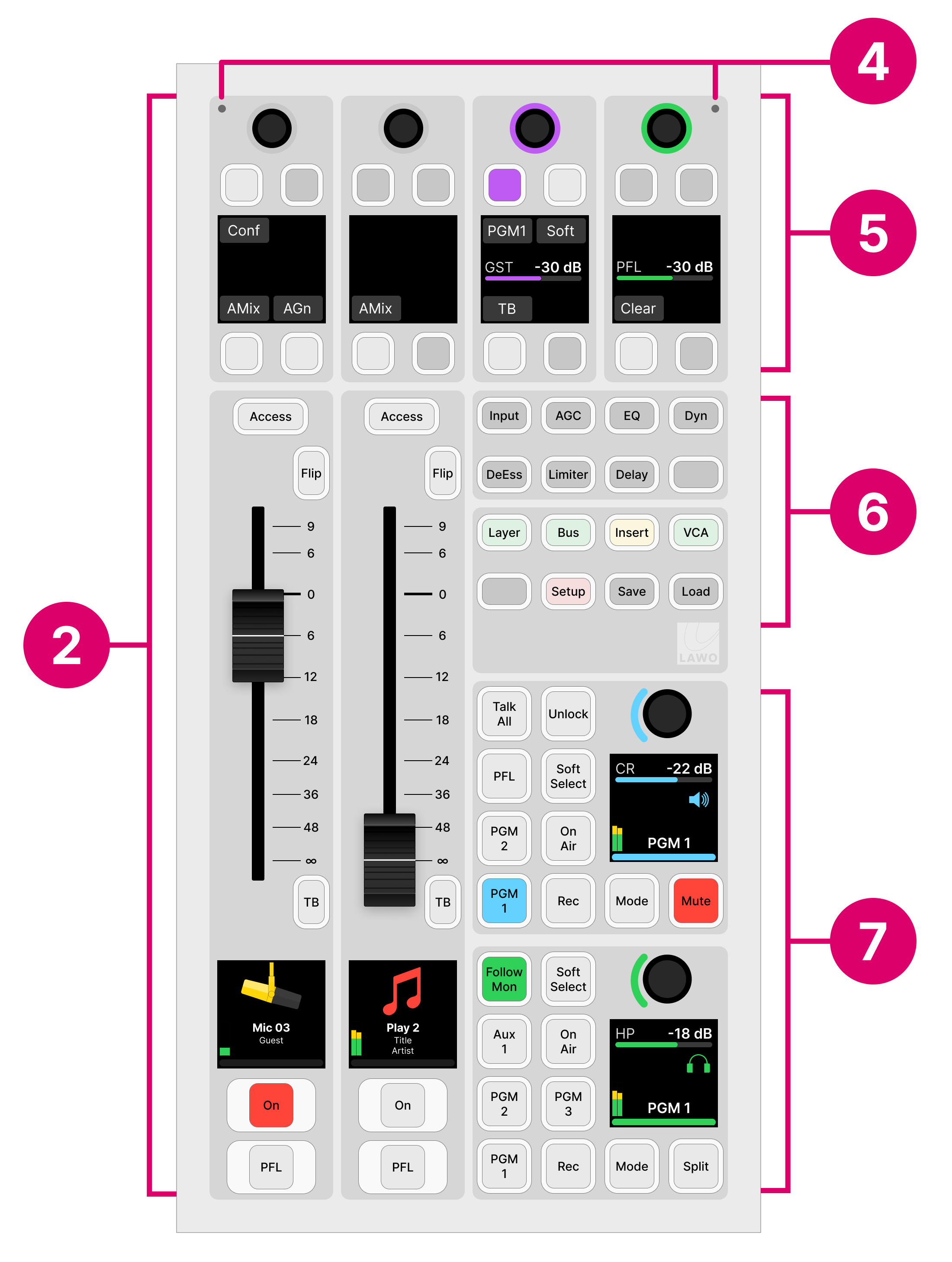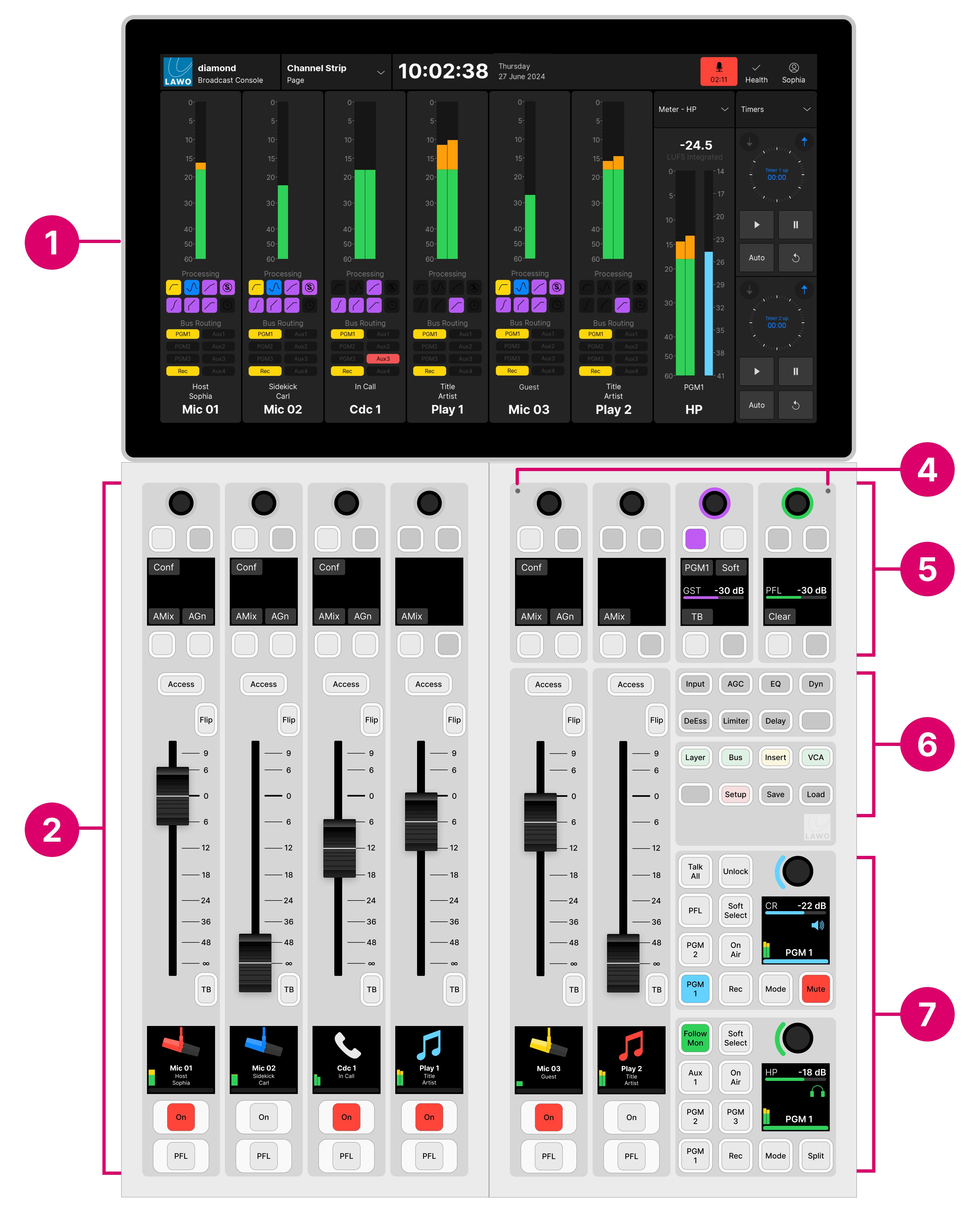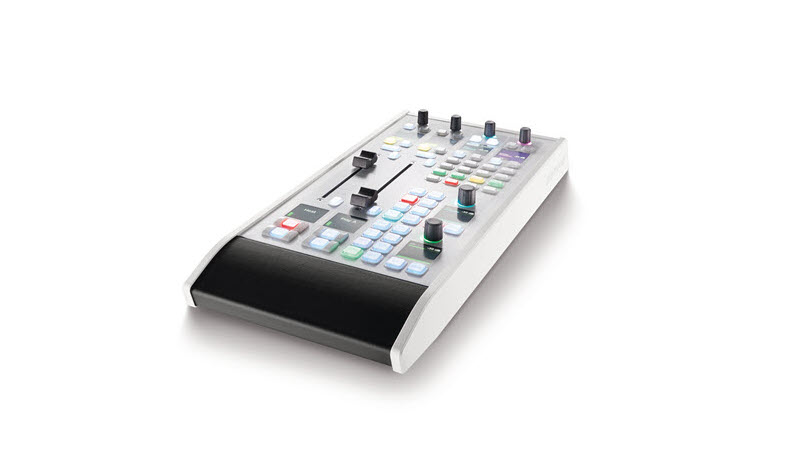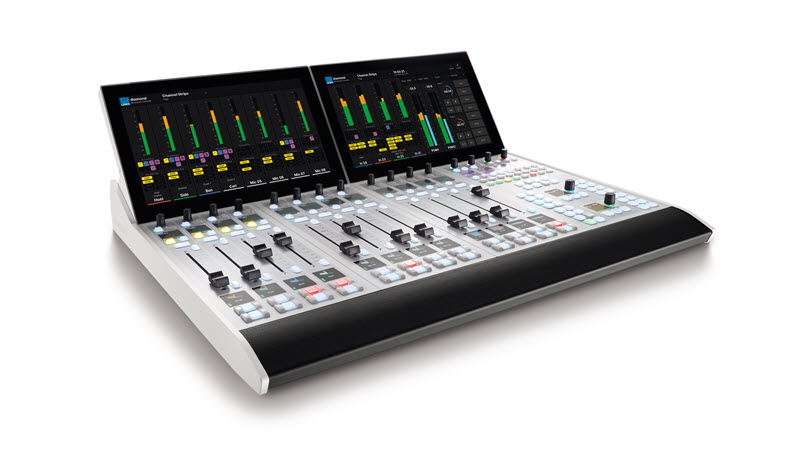diamond - Control Surface Overview
diamond comes in a range of flexible sizes and layouts, scaling from 2 to 60 physical faders. The smallest frame consists of a single module (2-fader Combo). This can be expanded by adding 4-fader modules to increase the width, and/or extension modules to increase the depth. Optionally, the Virtual Extension (VX) can be added to either standard or extended frames. The images below show three examples.
| | |
Configurable Functions
For each control surface module, some of the functionality is fixed and some is configurable.
Control keys that are configurable are known as MF (Multi-Function) keys. In most cases, the small MF keys are labeled by the electronic displays while the large MF keys use foil-printed labels. By default, the control surface ships with the correct labels for the standard configuration functions. If you change the MF key functionality, then you will need to exchange the foil-printed labels. See Exchanging the MF Key Labels.
Front Panel Controls
The front panel controls vary depending on the modules fitted to the console. The images below show three examples.



In each case, the controls are divided into the following areas:
1. Virtual Extension (optional) - visual feedback and touch-screen operation. The functionality is defined by the configuration.
2. Fader Strips - dedicated mixing controls for each channel. Some of the functionality is fixed and some is configurable. If a Rotary Extension module is included, then this provides four extra rotary controls per fader.
3. Key Extension (optional) - additional MF keys for central functions. The functionality is defined by the configuration.
4. Ambient Light Detectors - automatic adjustment of the surface brightness. This function can be disabled by the configuration.
5. Central Rotary Controls - four sets of rotary controls that are dual-purpose:
- When all Function Keys (6) are off, the controls are configurable. The functionality is defined by the configuration.
- When a Function Key (6) is selected, the controls update to adjust the selected function. For example, press Input to adjust the input parameters for the channel in access. In this mode, the functionality is system-defined, and the controls work in the same way regardless of the configuration.
6. Central Function Keys - 16 control keys for central functions. These functions are system-defined and include source parameter control, layer switching, bus/insert/VCA assign, setup options and snapshot save/load.
7. Central MF Keys & Rotary Controls - configurable MF keys and large rotary controls. The functionality is defined by the configuration.
To use an external keyboard for naming operations, such as editing user labels, connect the keyboard to the host PC (running the Lawo GUI application VisTool).
Module Options
There are five main options that affect how the surface looks and operates:
- the fader strip version: A or B;
- the module used for central controls: Central or Combo;
- whether the frame includes the Virtual Extension option;
- whether the frame is extended;
- whether the frame includes additional Central or Combo modules.
Fader Strip Version
diamond supports two different layouts for its fader strip controls:
- Fader A - the source display and MF keys 3 & 4 are below the fader.
- Fader B - the source display and MF keys 3 & 4 are above the fader.
In each case, it is only the physical layout that differs; there is no difference in the operation.
Both Fader and Combo Modules are available in A and B versions. Different versions can be mixed within the same surface if this is desired.
Central vs Combo Module (for the central controls)
For the central controls, diamond must include either a Central or Combo module:
- The Central module is dedicated to central controls and provides the most functionality.
- The Combo module provides two additional fader strips as well as central controls, and so there is some reduction in functionality. The Combo Module can be specified in either Fader A or Fader B versions. The fader strip version has no effect on the central controls.
Virtual Extension (VX)
The Virtual Extension can be specified for standard or extended frames. It occupies the space of two 4-fader modules and, therefore, is only permitted for certain frame widths. If the Virtual Extension is not included, then similar functionality can be achieved by running the Desktop App on an external display.
Extension Modules
If the frame is fitted with Rotary Extension modules, then these can operate in one of two modes:
- Rotary Fader Extension - adds an extra four rotary controls to each fader strip.
- Rotary Central Extension - adds more rotary controls to the centre section.
In both cases, the functionality is defined by the configuration.
The Key Extension and Combo Extension modules provide more MF keys. The functionality is defined by the configuration. Functions can include global page switching for the Rotary Fader Extension modules.
Additional Central or Combo Modules
If the frame is fitted with additional Central or Combo Modules, then these must run in what is known as "monitor mode". In this instance, all MF keys and rotary controls are defined by the configuration. Typically, they are used to provide additional monitoring for larger installations.


